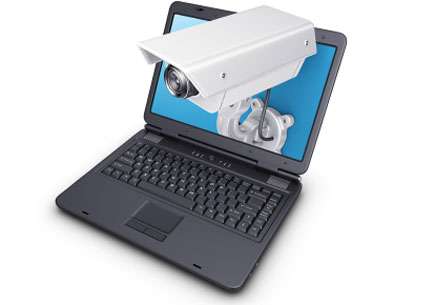

To flip the order, so that processes consuming the least of the resource are at the top, click the arrow next to Memory or CPU above the list of processes. By default, processes are ordered starting with the one that's consuming the most of the resource at the top, so you can quickly see where problems are occurring or likely to occur. So, clicking on CPU lists tasks in the order of how much CPU capacity they're using. Clicking on any of those tabs organizes processes according to the percentage of the resource they are using. You'll notice there are five tabs across the top of the Activity Monitor window: CPU, Energy, Memory, Disk, and Network. When it appears in Spotlight, hit Return to launch it. Alternatively, press Command and spacebar to call up Spotlight, then start typing Activity Monitor. The fastest way is to open Activity Monitor through iStat Menus.
#KEYTOUCH TO TRACK COMPUTER ACTIVITY HOW TO#
Here’s how to terminate process Mac is stuck upon: Then select your keyboard model on the list (the one you have now added!) and you can now use keytouch to configure/change what the keys do.IStat Menus also has a shortcut to opening Activity Monitor - just click the first icon on the left at the bottom of iStat’s drop-down menu. Then open up Keytouch and click import, find that file on your desktop and import it. Amarok Music Player) can be used.When its done and you have configured all the buttons Keytouch can detect, simply save it to your desktop. Extra plugins with actions for specific programs (eg. You can switch these around or enter custom program launchers or common actions (e.g. Some keys will be filled in with default values (Information is gleaned from inputs manufacturers have named). You'll then be taken to the Key settings tab where you can add keys, simply by pressing them and identifying them. After you select an input it will ask you to push all of the multimedia keys, until one is detected, just to make sure you have indeed selected the right input. Try all of the inputs which look similarly named to your device, as often you have more than one listed (Extra function keys are usually listed on the second input, while your main keyboard will use the first input, both should be similarly named).

On initial startup, you'll be asked to choose from a list of inputs, KeyTouch will name them. In Ubuntu 8.10 the KeyTouch-Editor launcher is found under System > Preferences. You can find KeyTouch-Editor under System > Administration. In the Keyboard tab you can switch your selected keyboard (requires a program restart). Extra plugins with actions for specific programs are available in the Preferences tab.

You'll then be taken to the Key settings tab where some keys will be filled in with default values. Select from the list of supported models and click "OK". On initial startup, you'll be asked for the model of your keyboard. You should now be able to find KeyTouch under System > Administration.
#KEYTOUCH TO TRACK COMPUTER ACTIVITY INSTALL#
Sudo apt-get install keytouch keytouch-editor

Open a terminal and enter these commands: Save the configuration file when your done and simply import into Keytouch itself^. You select your multimedia keyboards input, then press keys and identify them from a drop down list. * KeyTouch-Editor - The tool to setup your keyboard by teaching it. Currently supported models are listed in a table at the bottom of this page. It comprises of two tools: * KeyTouch - The tool to setup a keyboard that is already in the database. If your keyboard is not present, you can "train" it by starting up keytouch editor and pressing the relevant keys whilst identifying them. Keytouch allows the selection of profiles to select your keyboard model from a list in its database. This guide will explain the installation and configuration of the two basic KeyTouch tools. KeyTouch - The easy way to enable multimedia-keys!


 0 kommentar(er)
0 kommentar(er)
